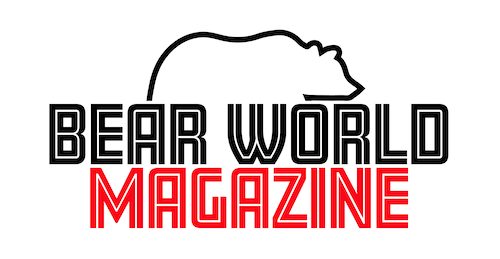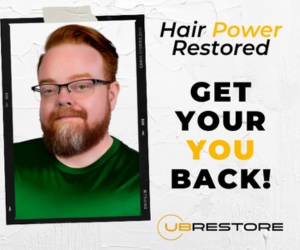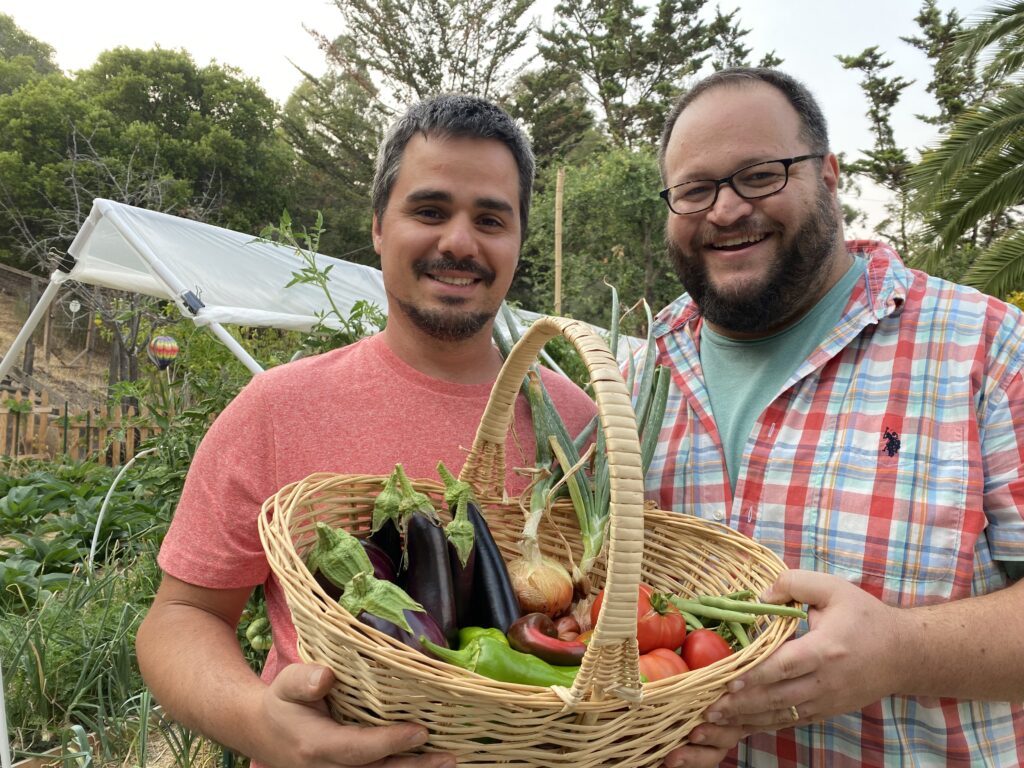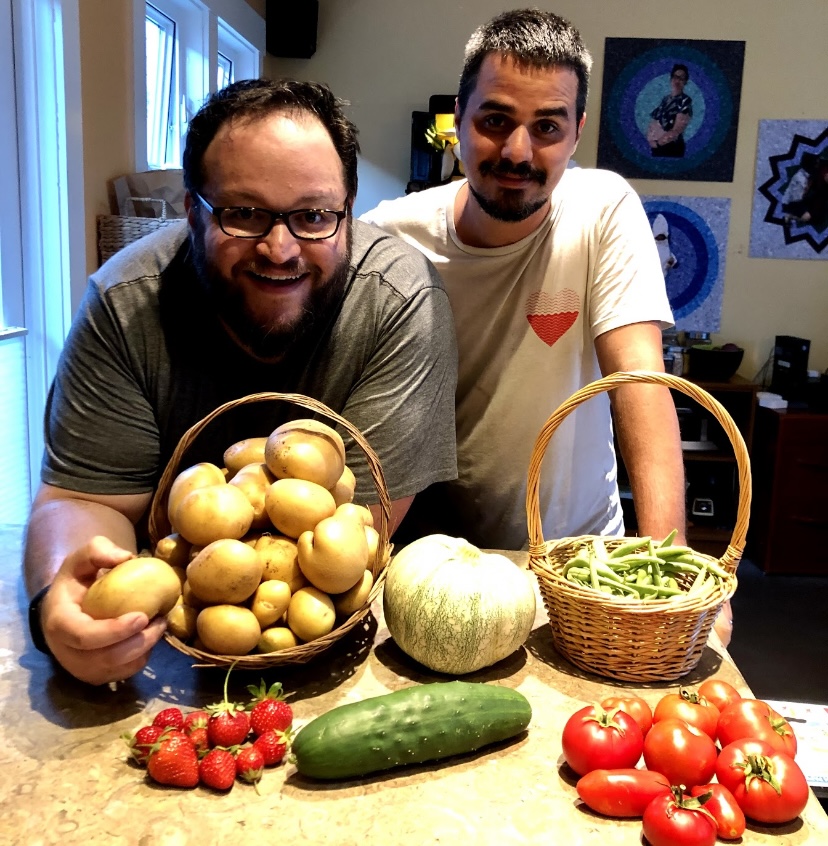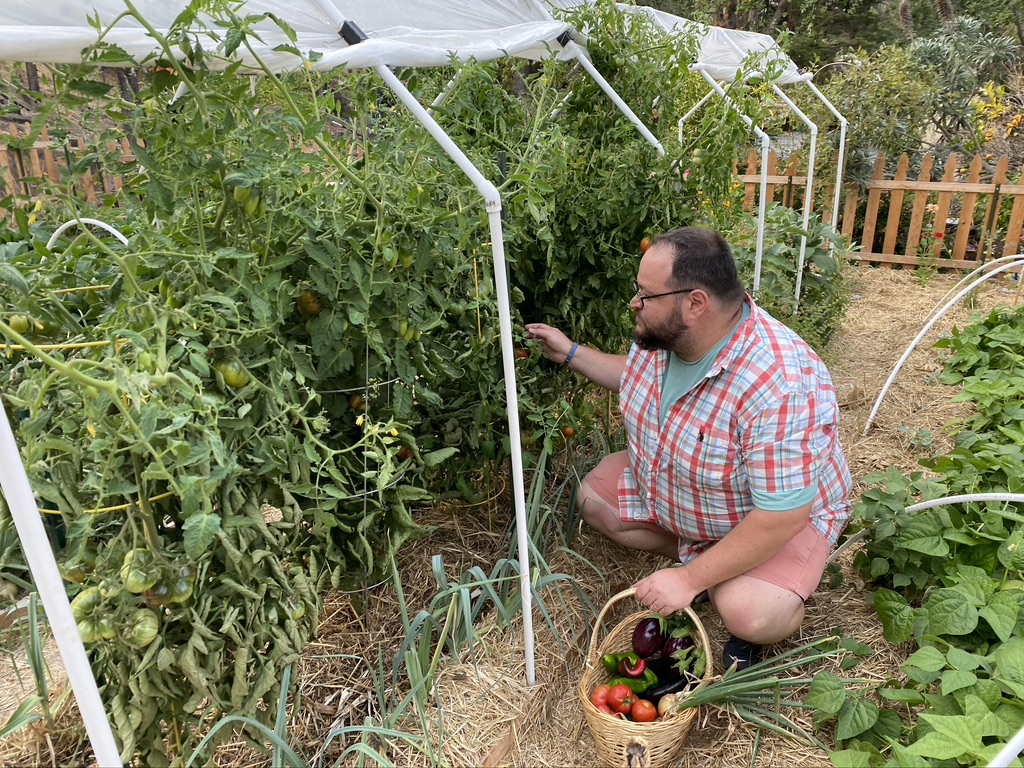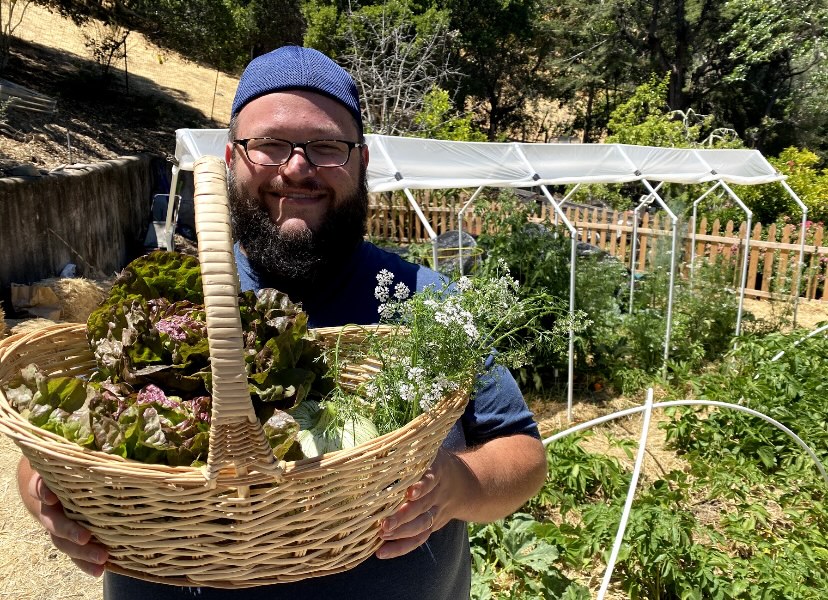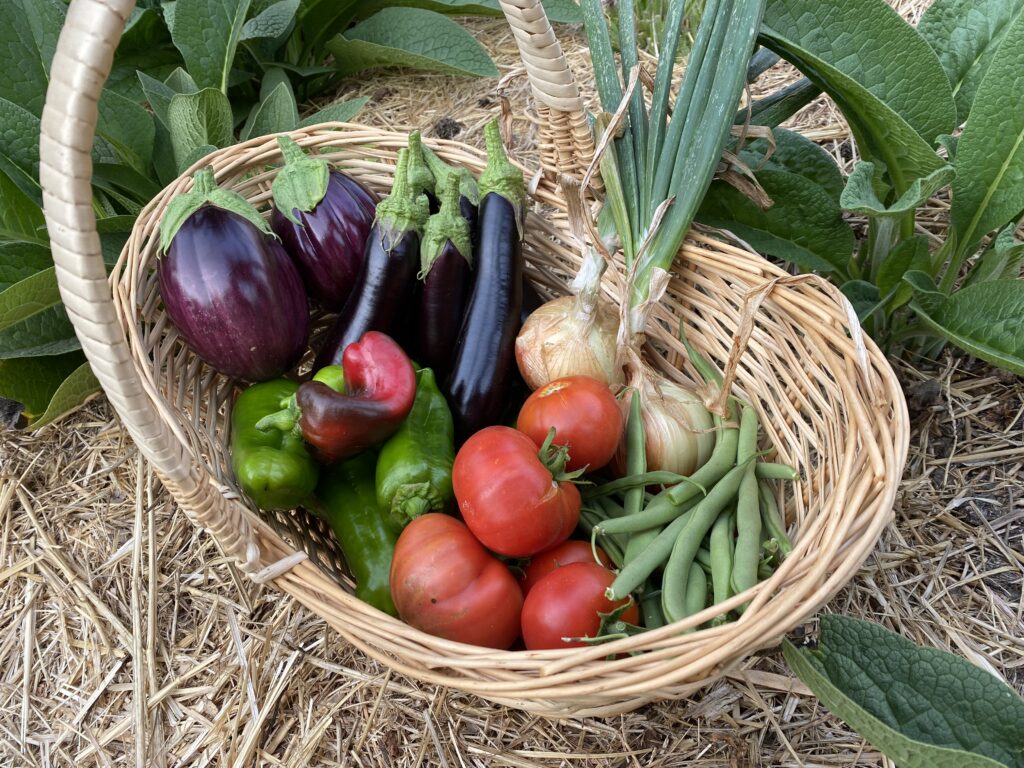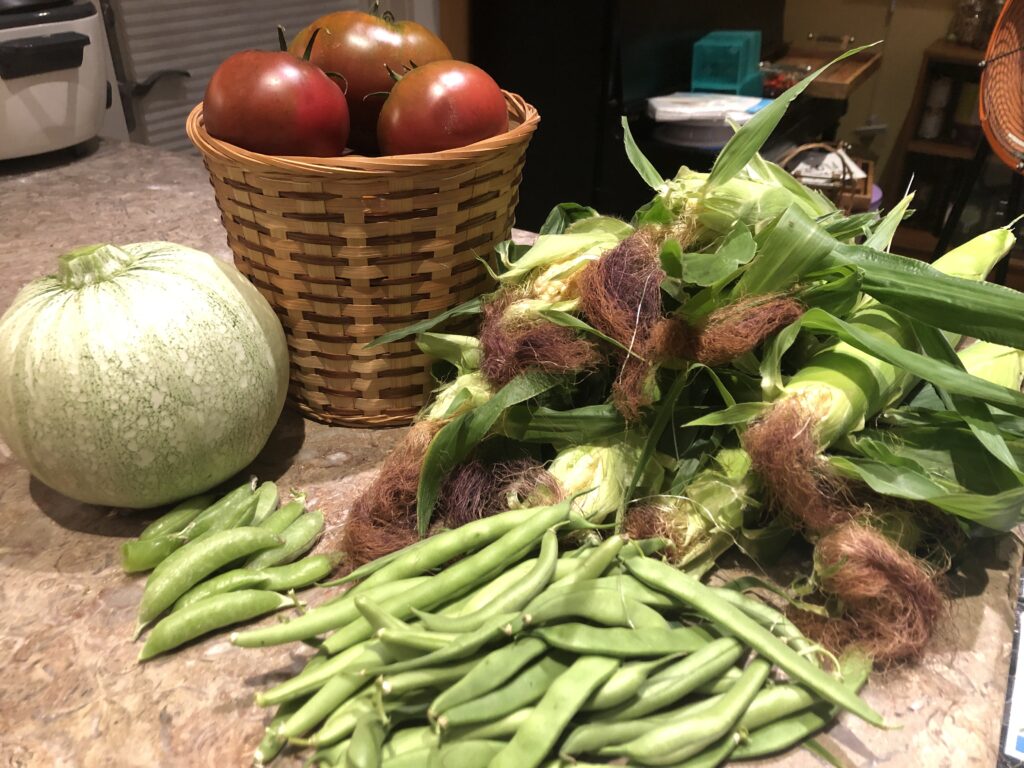Permaculture gardeners Jed and Selim give vegetable growing tips with YouTube channel
Bears don’t just eat vegetables, they grow them too!
If you’re like me, you’ve thought about growing your own vegetables… But where do you begin? Well, in that search for gardening tips, I stumbled across permaculture gardeners Jed and Selim.
Jed and Selim have a YouTube channel called “Late Bloomers” where they give tips on permaculture gardening. Jed and Selim’s permaculture knowledge coupled with Jed’s comedy skills makes their series of videos both entertaining and informative.
So, what exactly is permaculture gardening? Jed and Selim give us the scoop below.
KYLE: For those who don’t know, can you explain what permaculture gardening is?
JED: Sure! In the simplest sense, permaculture gardening is about working WITH nature, not against it. So for example, rather than using pesticides to kill the bugs that eat your plants (and inadvertently kill lots of beneficial bugs too), permaculture asks how can you build an ecosystem in your garden that encourages the natural predators of your pests? There’s no such thing as an aphid problem, just a lack-of-ladybugs.
SELIM: Exactly. Nature created healthy and abundant ecosystems for billions of years without human help. Permaculture principles and ethics teach us to use nature itself as a source of inspiration.
The goal is to design and cultivate the best ecosystem for your specific context in order to help all the different elements in the garden to have the best interaction between them, which leads to a healthy, fertile and living garden. Why spend money, energy and time for years to pump water to your garden, when rain collection and gravity can do it for free?
KYLE: How did the two of you get started in permaculture gardening?
SELIM: After coming out, I discovered my passion for self-development, which led me to become a life coach. I knew that a good way to keep improving myself was to learn how to do and make things on my own, to gain skills and be more self-reliant. And of course I was concerned about climate change and feeling a little helpless about how big and unsolvable the problem seemed.
And that’s when I discovered this French guy, Philip Forer. Well, I discovered his videos on YouTube. He talked about permaculture and I knew right away that this was the thing that I needed. Not only did it totally align with my values and what I was looking for, but it was the kind of practice that anybody could do at any scale. I didn’t need to get a farm, I could do it on my apartment’s balcony, or in a tiny backyard.
So I decided to try one of the things he demonstrated, a simple mound. I felt the soil between my fingers, heard the leaves moving with the wind and the dirt under my step. The different smell of everything around me, observing and watching patiently the plants growing, and getting to finally taste and share the fruits of that journey… It was incredible. I felt pure wonder. I was hooked.
JED: My path was a little simpler. I fell in love with Selim and he made me fall in love with permaculture.
KYLE: Can you tell us more about your YouTube series and how it started?
JED: At the beginning of the pandemic, I relocated back to California to be with my parents, because my mom was going through chemo at the time. Luckily, Selim was able to take a break from his life in Montreal to come join me.
That spring and summer, we had a lot of time on our hands and nowhere to go thanks to Covid, so we experimented in the backyard with smaller projects like our wicking beds (which are really cool beds that are self-fertilizing and self-watering!) and lasagna mounds (I was disappointed to discover they did NOT grow lasagna).
My mom passed away last August and after a pretty dark fall and winter, Selim proposed the idea of turning the big patch of grass in our backyard into a permaculture garden. He’d found this incredible model to guide us from a French permaculture group called Permaculture Design and it just felt right. We knew right away we’d likely make a hundred mistakes and learn so much through the process and it kinda just clicked that “hey, we should document this and show people what we learn as we go.”
So much of what we’ve learned in permaculture and gardening has come from others sharing their experiences on YouTube, through lectures and in books, so we figured why not pay it forward. I’m a comedy writer/improviser who hasn’t had a creative outlet for sometime, so we figured our niche could be that we talk about permaculture and gardening, but we bring humor and silliness to it.
KYLE: What do you all grow in your garden?
SELIM: We grow a lot of different things. A big part of permaculture is embracing biodiversity, so we try really hard to have lots of different varieties. Obviously we have our annual beds where we grow all the delicious things we get to eat. We have four tomato plants (each of a different variety) and they’ve already produced 60 pounds of tomatoes and they’re still going. Among others, we’ve got eggplants and beans and zucchini and carrots and onions and earlier this season we harvested our potatoes and cabbages.
So while the annual beds feed us, we actually have other beds dedicated solely to feeding the annual beds. We grow hearty, leafy perennials and chop them down regularly, mulch them up, and put that mulch on the annual beds. It’s a big part of how we keep our soil fed and healthy in a sustainable way without using fertilizer!
And we also have an entire zone for perennial plants, some are for food, like artichoke and strawberries, but many serve another purpose: To encourage bugs and other life, for medicine or dyes, or even raw materials for mulching or crafting. In our biodiversity zone we have a beautiful pond that also helps attract life and we’ve got some stunning flowers too.
KYLE: Do you have any future plans to expand your permaculture work?
JED: Right now we’re just trying to learn as much as we can. Permaculture is really a mix between art and science. So much of it is simply making a choice and then observing how it affects the outcome. It can take years to really get to know a piece of land, to understand how water travels through it, how life interacts within it, what the soil composition is and how it changes, which specific plants perform the right mix of functions.
SELIM: I’d like to be able to get to a point of expertise where I can really help other people in their permaculture journeys. And of course, eventually we’d like to get a larger piece of land somewhere, something big enough to feed our family. Jed wants a lot of kids, so I told him we can have one kid per acre.
JED: *laughs* I’m gonna make you regret that. We’re gonna get 10 acres.
SELIM: Help.
KYLE: What would you tell someone who was looking to get into permaculture gardening?
JED: Start small in your own backyard — or balcony or fire escape or whatever you’ve got. And get ready to make a lot of mistakes. Lean into the mistakes. It’s the best way to learn.
SELIM: Watch some YouTube videos. That’s how I started and there’s an incredible amount of information out there for anyone interested. Find someone who inspires you.
JED: Our series is a great starting point!
SELIM: Yes!
